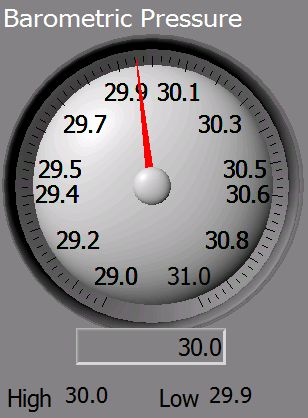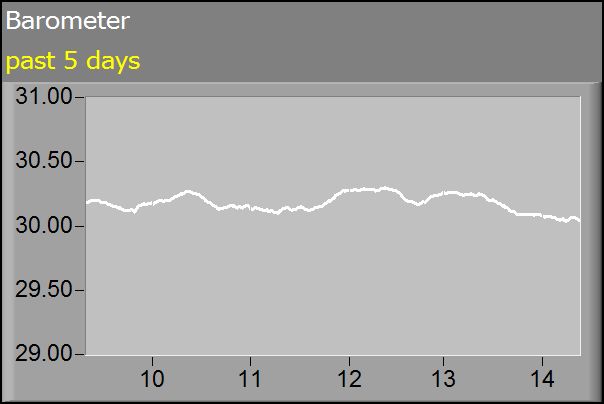- Barometer
-

The Barometer
Atmospheric pressure is measured with an aneroid barometer that expands or contracts as atmospheric pressure changes.
Atmospheric pressure is a key parameter used for weather forecasting. Measuring the atmospheric pressure helps to locate surface troughs, high pressure systems, and frontal boundaries.
- Barometer
-

Barometric Pressure
The average (or standard) pressure at sea level measures 29.29 inches of mercury.
Atmospheric pressure decreases 4% per 1000 feet of elevation; it is only about 21 inches of mercury at an elevation of 10,000 feet.
Meteorologists convert the measured atmospheric pressure at a weather station, such as Medford (1300 feet above sea level), to its equivalent sea level value.
Unit of measure = inches of mercury
- Barometer
-

Pressure Trend
If the barometer begins a steep and rapid descent, there is a good chance a storm is approaching; the faster the barometer falls, the windier it will be.
x axis is day of month
- Barometer
-

Green Living Tip
A rapidly falling barometer can indicate an approaching summer rainstorm.
This is a good time to check the weather forecast to see if you might be able to shut off your irrigation for awhile.
A summer rainstorm is also a good opportunity to have your rain catchment system refilled. Check to be sure it’s in good working order.
